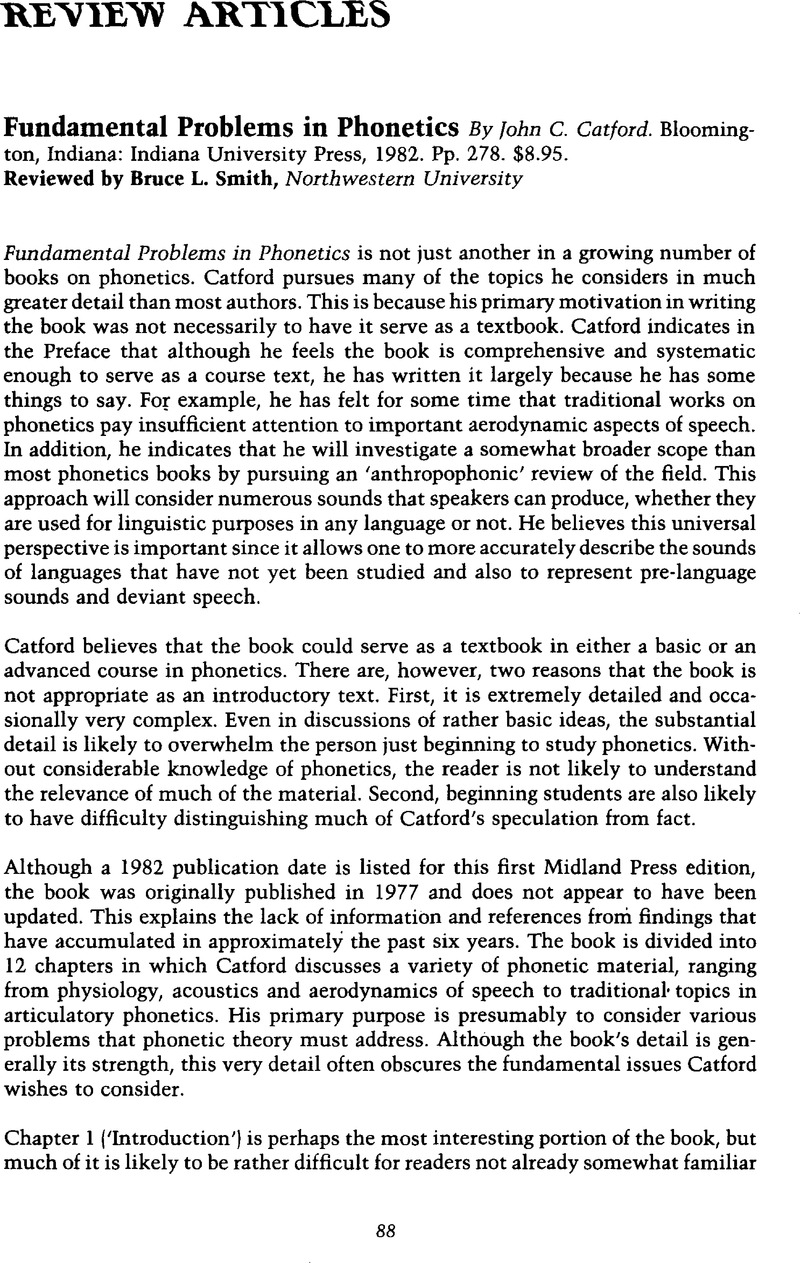No CrossRef data available.
Article contents
Fundamental Problems in Phonetics
Published online by Cambridge University Press: 07 November 2008
Abstract
An abstract is not available for this content so a preview has been provided. Please use the Get access link above for information on how to access this content.

Information
- Type
- Review Articles
- Information
- Copyright
- Copyright © Cambridge University Press 1983
References
Kent, R. D. 1983. The segmental organization of speech. The production of speech, ed. by MacNeilage, P.P.. New York: Springer-Verlag.Google Scholar
Klatt, D. 1976. Linguistic uses of segmental duration in English: Acoustic and perceptual evidence. Journal of the Acoustical Society of America 59. 1208–1121.Google Scholar
Ladefoged, P. 1983. Cross-linguistic studies of speech production. The production of speech, ed. by MacNeilage, P. P.. New York: Springer-Verlag.CrossRefGoogle Scholar
Lindblom, B., Lubker, J. and Gay, T. 1979. Formant frequencies of some fixed-mandible vowels and a model of speech motor programming by predictive simulation. Journal of Phonetics 7. 147–161.CrossRefGoogle Scholar
Lindblom, B. and Sundberg, J. 1971. Acoustical consequences of lip, tongue, jaw and larynx movement. Journal of the Acoustical Society of America 50. 1166–1179.Google Scholar
Lubker, J. and Gay, T. 1982. Anticipatory labial coarticulation: Experimental, biological, and linguistic variables. Journal of the Acoustical Society of America 71. 437–448.Google Scholar
Ohala, J. J. 1983. The origin of sound patterns in vocal tract constraints. The production of speech, ed. by MacNeilage, P. P.. New York: Springer-Verlag.Google Scholar

